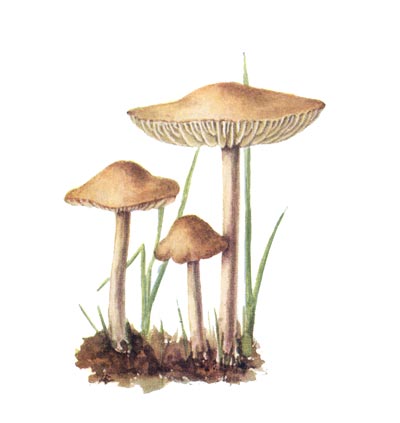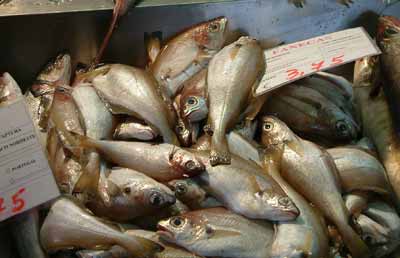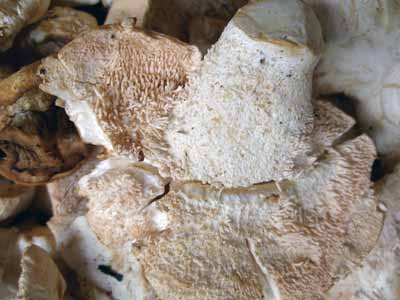
The fairy ring mushroom with white flesh and a pleasing taste. These dry well and have good flavour but must be cooked first.
Pollack. A member of the cod family found in the eastern and north Atlantic and weighing around 1 kg (2 lb). It is dark green above and has a protruding lower jaw. They have rather grey, flaky flesh and are often salted and dried or pickled and are also commonly used for making imitation shellfish foods. Treat is as you would cod. I have heard that Somerville and Ross, in the Irish RM, describe pollock as tasting like cotton-wool with pins in it.
Wels or sheetfish. A type of catfish that can grow up to 5 m (16 ft) in the wild and is Europe's largest freshwater. It is found in the Rhine River in Germany eastwards to the Black and Caspian Seas. The elongated wels body consists of a powerful forebody and a laterally greatly compressed tail shaft; the prominent anal fin merges with the caudal fin. This fish, with its calm undulating tail movements normally has its long pair of upper jaw barbels pointing straight forward, while the four smaller barbels of the lower lip hang down. The dorsal fin, consisting of just four rays, seems small for such a powerful animal. In the wild they have been known to eat ducks where they rush up behind them at night, sucking them into their mouths with a vortex motion. In their native habitat they feed on other fishes mainly eels, burbot, tench and roach, but it also takes water voles.

A name in Bermeo for the pout or bib, a coastal fish, similar to poor cod, shaped like an elongated triangle with a copper-coloured back and silvery sides and belly. It is about 20-30 cm (8-12 inches) long. It has a short barbel on its lower jaw, long thin pelvic fins and two abdominal fins connected by a membrane, The flesh is lean, but rather flavourless and has many bones. It deteriorates rapidly, and so should be prepared very quickly.

Hedgehog fungus. Cream-coloured mushrooms, excellent to eat, easily found in woods from late summer to late autumn (US: fall). They have a sort of downy white stem leading up to a cap which is centrally depressed and under which are masses of little spines, giving the mushroom its English name. It is quite a good mushroom to collect as it is easily distinguished from other mushrooms, is a relative of the chanterelle, and, like it, has good flavour and good retention of texture on long cooking.